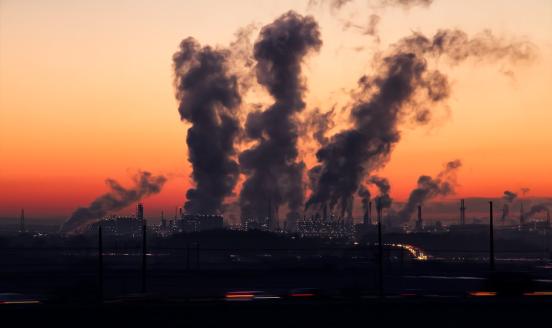What 2019 could bring: A look inside the crystal ball
Economic performance prospects in Europe, the US and Asia in 2019. We start off by reviewing commentaries and predictions about the euro zone, which m

In its Economic Bulletin, the European Central Bank (ECB) expects the global economy to decelerate in 2019 as a result of cyclical forces and trade tensions. For the euro area it projects real GDP growth of 1.7%, inflation of 1.8% and somewhat increased government budget deficits.
This assessment is at the optimistic end of a range of economic forecasts that the Financial Times (FT) collected from euro-zone observers. Only half of the 24 respondents expect the euro zone to grow by more than 1.5% in 2019. The more pessimistic outlook is mostly due to uncertainties around Brexit, the threat of further US protectionist measures and reduced demand from China.
Most respondents acknowledge that anti-EU populists are likely to increase their seats in the European parliamentary elections in May, but few expect this to have a large effect on the performance of the euro-area economy in 2019, as the majority will remain with traditional parties. Finally, as most respondents have lower inflation expectations than the ECB, the earliest interest rate rise in the euro area is expected in late 2019 or in 2020. Because of disappointing industrial output in Germany, Reuters reports that money markets do not expect the first rate hike before mid-2020.
Many commenters stress that the euro-area economy is still going strong, and that they expect growth to pick up in the second half of the year if uncertainties concerning trade, European elections and Brexit have waned. However, there remain plenty of downside risks to this scenario.
Start with the US-China trade war: in case of further escalation, global trade and exports from Europe are expected to slow down. But even in the case of a truce, Alicia Garcia-Herrero argues that “trade diversion away from Europe and in favour of the US” should be expected because part of a truce will inevitably be an increase in Chinese imports from the United States. Add to this the possibility of US tariffs on EU automobile exports, on which a US commerce department report will be published in February 2019.
Financial risks in the euro area remain substantial, writes Shamik Dhar in the South China Morning Post. Because European banks still own European sovereign debt, region-wide contagion in the financial sector remains a problem. Similarly, Patrick Jenkins criticises the zero risk-weight on EU sovereign bonds, which incentivises European banks to hold a large share of domestic bonds. This evidently increases the danger of another doom-loop crisis in the euro area. Finally, Martin Wolf argues that ever-increasing global debt levels and still-negative interest rates leave little room to manage even a modest slowdown. Furthermore, with a weakened global political order and economic conditions diverging across the world economy, coordinated responses to deal with a global slowdown will become unlikely.
As the world economy is inevitably intertwined with the US business cycle, Henry Curr, economics editor at the Economist, takes a closer look at the downside risks in the US economy. He notes that the US Federal Reserve’s interest rate hikes, although well managed so far, remain a source of risk to the US economy because of the inherent uncertainties involved in monetary policymaking. While all classes of assets have seen immense price increases, the lowest-rated investment-grade corporate bonds, which make up 45% of all investment-grade corporate bonds, could turn out to be a particular risk as only one downgrade would take them into ‘junk’ status.
Also, further interest rate hikes could bring down borrowers with floating-rate debt as well as trouble emerging markets that have to service dollar-denominated debt. Substantial turmoil in emerging markets would in turn strengthen the dollar, via investor flight to safe assets. Possibly induced by very robust expectations of several interest rate hikes in 2019, the US Federal Reserve is assumed to have backtracked somewhat and indicated in the new year that monetary tightening is going to be rather limited.
Jeffrey Frankel predicts that US growth will slow down in 2019, as the stimulating effects of the tax cuts wear off and the dysfunctionalities of the US government – such as the trade war and the government shutdown – may start to inflict serious damage on the economy. He notes that interest rates in the US are still very low when compared to the inflation rate or the ideal interest rate suggested by the Taylor Rule and, therefore, further interest rate hikes by the US Fed are expected. While Mr Frankel acknowledges that raising interest rates can pose difficulties for emerging markets, he highlights that increasing US interest rates implies a strongly growing US economy, which is “not bad news for the world economy overall”.
Leo Abruzzese sees economic trouble brewing in 2019. As the US economy continues growing and inflation seems to pick up, the US Fed will continue to raise interest rates. But higher interest rates in the US will increase the costs for developing countries to service their often dollar-denominated debt and make it costlier to raise further debt. With global debt being 20% higher than 2007, rising interest rates will be troublesome news not only for developing economies, but also for companies in advanced economies who increased their debt substantially over the last decade while interest rates were low. On the upside, Mr Abruzzese notes that bank-capitalisation and corporate and government risk management has improved since 2007. However, as the US-China trade war will depress business investments and Chinese consumption is slowing down, the signs of stress are evident and signal trouble ahead.
The sentiment that the Chinese economy is slowing down in 2019 is widely shared by the Chinese government as well as international observers (e.g. the World Bank). The China-US trade war is deemed one of the most significant risks for the Chinese economy. In accordance with other commentators, Simon Rabinovitch, the Economist’s Asia economics editor, does not think that the US-China trade war is coming to a quick end. The kind of demands US negotiators are making from China in order to lift tariffs are the very reverse of what the Chinese government deems essential to moving up the value chain. Instead, China is likely to sit it out and ease financial constraints in the economy to dampen the effect of reduced exports.
But a fully fledged trade war could reduce Chinese GDP growth substantially, writes Takahide Kiuchi for the Nikkei Asian Review. Assuming that the 90-day trade war ceasefire between the US and China will not end the escalation of tariffs between the two economies, the Chinese GDP is likely to take a hit by up to 1.4%. Such a slowdown may trigger defaults in Chinese investment products that, in turn, could raise the danger of bank failures, reduce banks’ lending and trigger further financial market turmoil. All of this might shave another half-percent off Chinese growth, which would then stand at 4.5% instead of the 6.4% in the case of trade war settlement.
Apart from trade tensions, troubling signs have also emerged around the Chinese economy, most recently in form of a letter written by Apple’s CEO warning that profits might be lower than expected, partly because of the unforeseen “magnitude of the economic deceleration, particularly in Greater China”. A reduction in Chinese manufacturing activities, possibly triggered by uncertainties around trade, seems of particular concern. However, Uday Khanapurkar writes in the Diplomat that the Chinese economy should not only be judged by the manufacturing index. China has a remarkable track record in spawning large digital-service companies such as Alibaba and Tencent, and he argues that observers need to take the increasing importance of the Chinese service sector into account before they “sound the death knell on the Chinese economy”.
In response to the signs of deceleration, the Chinese government announced tax cuts, additional fiscal stimulus and easing of constraints in the financial sector. While these measures are expected to boost domestic consumption in 2019, they also increases worries about unsustainable debt among Chinese corporations. Hence, Panos Mourdoukoutas writes in Forbes how the Chinese debt situation, which could be as high as 300% according to some estimates, reminds him of the Greek debt crisis. As the Chinese government is often both lender and borrower, credit risks are concentrated and pose the most important risk for the Chinese and world economy in 2019.
Nevertheless, Simon Rabinovitch thinks that the slowdown could also motivate some deeper reforms such as a balancing of tax revenues between provinces, the reduction of import tariffs, and further opening up of its financial sector to foreign investors. This would not stop a slowdown of Chinese growth towards the 6% mark, but it would improve long-term perspectives.



